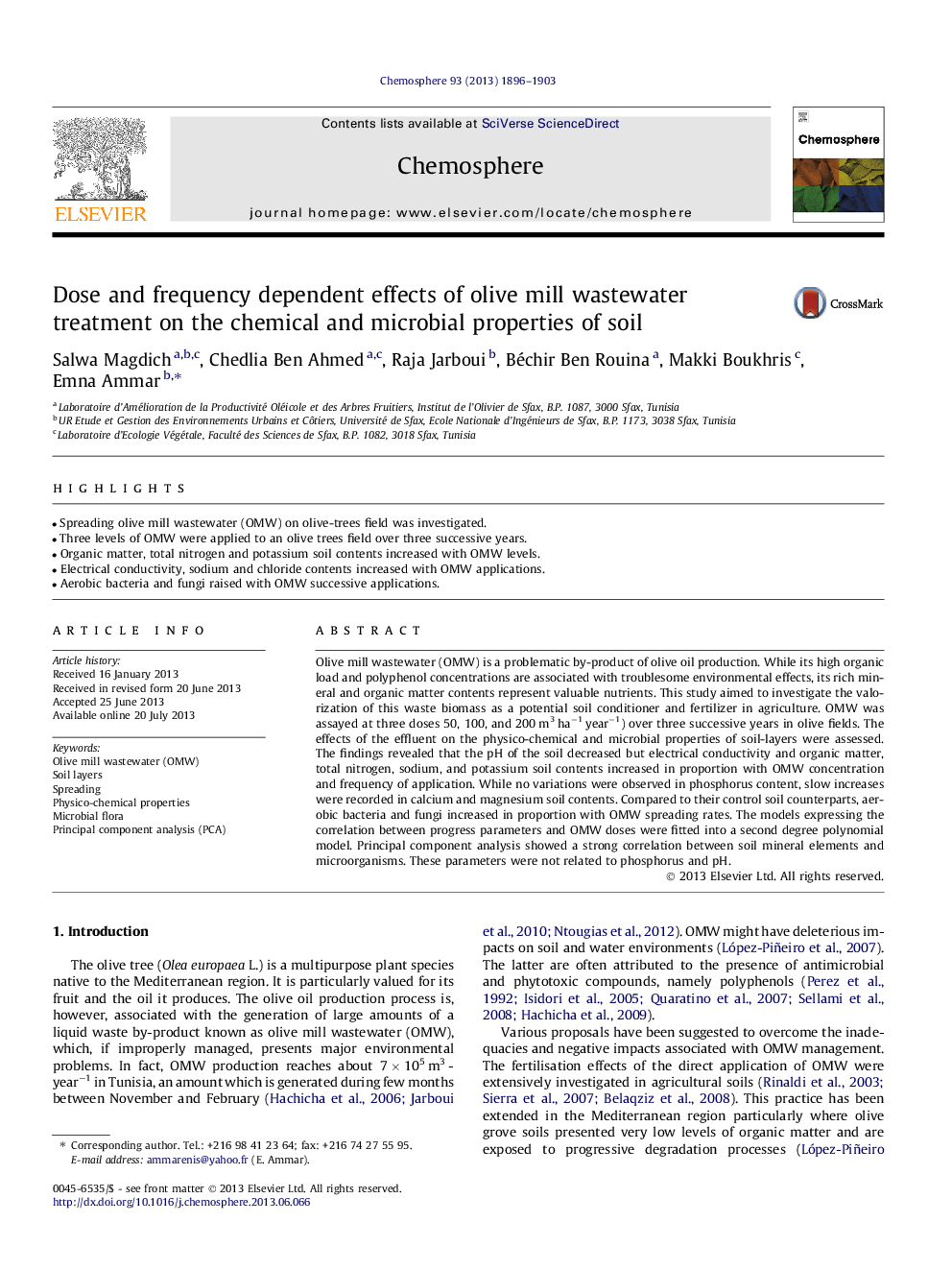| Article ID | Journal | Published Year | Pages | File Type |
|---|---|---|---|---|
| 6310113 | Chemosphere | 2013 | 8 Pages |
Abstract
Olive mill wastewater (OMW) is a problematic by-product of olive oil production. While its high organic load and polyphenol concentrations are associated with troublesome environmental effects, its rich mineral and organic matter contents represent valuable nutrients. This study aimed to investigate the valorization of this waste biomass as a potential soil conditioner and fertilizer in agriculture. OMW was assayed at three doses 50, 100, and 200Â m3Â haâ1Â yearâ1) over three successive years in olive fields. The effects of the effluent on the physico-chemical and microbial properties of soil-layers were assessed. The findings revealed that the pH of the soil decreased but electrical conductivity and organic matter, total nitrogen, sodium, and potassium soil contents increased in proportion with OMW concentration and frequency of application. While no variations were observed in phosphorus content, slow increases were recorded in calcium and magnesium soil contents. Compared to their control soil counterparts, aerobic bacteria and fungi increased in proportion with OMW spreading rates. The models expressing the correlation between progress parameters and OMW doses were fitted into a second degree polynomial model. Principal component analysis showed a strong correlation between soil mineral elements and microorganisms. These parameters were not related to phosphorus and pH.
Keywords
Related Topics
Life Sciences
Environmental Science
Environmental Chemistry
Authors
Salwa Magdich, Chedlia Ben Ahmed, Raja Jarboui, Béchir Ben Rouina, Makki Boukhris, Emna Ammar,
